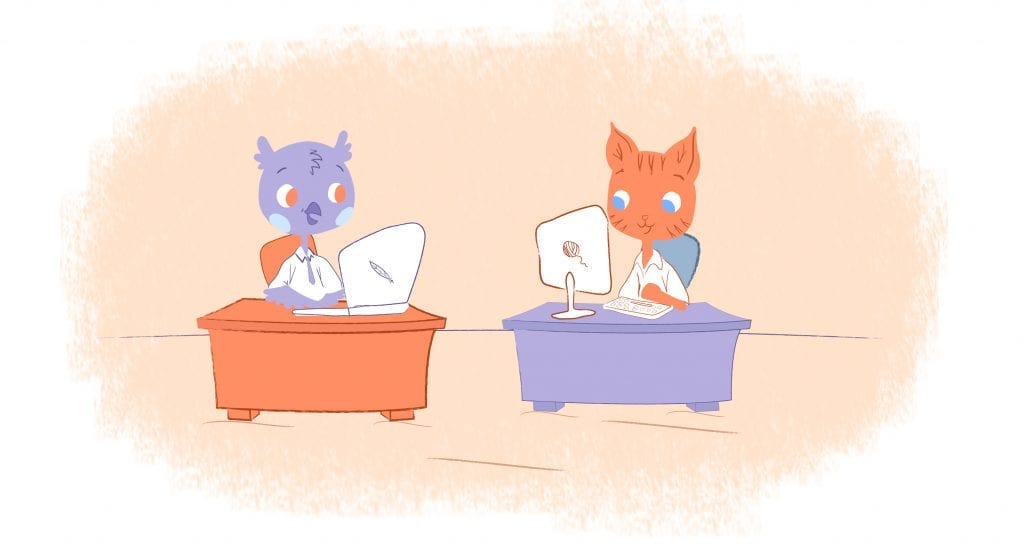

In today’s fast-paced world, enhanced time management can often be the key to achieving success and maintaining a healthy work-life balance. With the various demands of work, family, friends, and personal life, staying on top of it all can feel overwhelming.
Fortunately, we live in an era where humble calendars live their best lives by helping us live ours. Gone are the days when calendars were little more than functional wall decorations. These days, digital calendars are transforming how people interact with their lives.
If you’re ready to increase your efficiency, productivity, and create more pockets of free time in your life, read on.
Reassuring Reminders
As your workload and number of planned activities increases, it can be hard to keep track of them all. The human mind is by no means a perfect storage system. You’re liable to forget a date, time, place, or other important detail eventually.
So while this feature may seem overly simple on first blush, it can be a game-changer when used to its fullest extent. A great digital calendar will sport a reminder feature that pings you at a certain time or location. The goal is to keep you on track so you never forget appointments, assignments, deadlines, etc.
This is one area where it’s clear how digital calendars are much more powerful tools than their physical counterpart. While you can write down logistic details on a physical calendar, it won’t actively remind you about them unless you look at it.
Many digital calendars have the option to sync with other devices. That way you can leverage reminders no matter where you are or when it is. Your devices will ping you at the predetermined time or location so you’re never at a loss for when, where, or with whom to go.
If you’re an iOS fan, for example, and many of you are, Apple’s calendar app will naturally sync across all your devices. So whether you initially set a reminder on your phone, iPad, or computer, you’ll still be reminded on all those other devices. You can even make use of Siri to schedule reminders hands-free. Just make sure you’re logged in to your iCloud on those devices!
As you begin to expand your repertoire of digital calendar uses, you’ll notice many areas of overlap with other calendar enthusiasts. This branches into the next strength of an online calendar: collaborative scheduling.
Collaborative Scheduling
While Apple’s calendar app is a powerful personal tool, there are others that heighten a team’s ability to collaborate. Teams, comprised of human minds, are also liable to miscommunication and misunderstanding of logistics. So it’s important to display those logistics as clearly as possible for everyone to digest.
There are a number of different digital calendars that enable calendar sharing between multiple people. Here are just a few for you to explore.
Google’s is well-known for its integration with Gmail — another great use of reminder pings. Google Calendar allows its users to see everyone’s disparate daily schedules overlaid together in one place. That way users can easily identify schedule conflicts and areas of collaborative opportunity at a glance.
Microsoft Outlook is one of the strongest team productivity enhancers for teams already working with other office products like Word, PowerPoint, and Excel. Because it integrates directly with Office 365, you can share calendars, schedule meetings, and even edit documents all without leaving your email client.
Calender is a new player in the field, but one whose offerings rival some of the biggest players. With a handy Chrome extension, Calendar enables immediate access to all of your meeting links and scheduling events without twitching tabs. It also allows you to share potential meeting times with others via email and social media connectivity at the click of a button.
As time goes on, digital calendars are becoming even more and more integrated. Not only with each other but with other digital products and services as well. Some sync with Zoom, Salesforce, Hubspot, and many more.
This enhances scheduling capabilities to increase time management between individuals and their respective teams. Some even take it a step further, transforming from a calendar to an entire workflow pipeline.
Project Management Software
There’s no doubt that scheduling meetings effectively is an important business function. However, those meetings won’t amount to much unless the actual work they’re supporting gets done. But as teams scale and your products and services become more complex, workflow pipelines tend to get clogged.
Project management software aims to address this issue by enabling teams across various industries to plan, execute, and track projects with efficiency. This kind of software is designed to centralize all phases of project management in one easy-to-visualize location.
Most modern versions of this software are in some way derivations of Gantt charts, designed and popularized by Henry Gantt in the early 1900s. These charts show the dependency relationships between tasks and activities contextualized by a schedule.
Nowadays these chart systems have become highly streamlined: easy to create, view, and manage. Companies like Asana, ClickUp, and monday.com. Each has its own strengths, but all aim to display resource allocation, synchronize scheduling, and provide real-time updates.
While this kind of software is often used by teams at scale, that’s not to say these tools are only useful for teams. Individuals who want to streamline and centralize various tasks can also make great use of it. Freelancers, entrepreneurs, and other independent professionals can use project management tools to keep track of multiple projects at the same time.
Consultants and coaches can use them to track appointments, and deadlines for delivering reports or services, and ensure follow-ups with clients. Job seekers and students can benefit from tracking their searches, applications, and networking activities. Even fitness enthusiasts can develop their routines and track nutrition plans.
In essence, project management software can benefit anyone who wants to stay organized, on-task, and manage interdependent projects.
Data Analytics and Self-Improvement
Speaking of individuals looking to improve themselves, digital calendars offer a host of features for those committed to their personal development.
Want to manage your time better? Digital calendars can provide insight into how you spend your time. Your calendar can analyze your scheduled blocks of time and represent each chunk statistically.
This includes the percentage of time you allocate to work, leisure, personal commitments, and other activities. You can then examine these statistics, and identify whether you’re achieving your desired work-life balance or if you need to adjust your priorities.
Todoist, TimeTree, and Calendar are some of the best calendar apps for this kind of self-monitoring. They’ll enable you to develop yourself more intelligently, concretely, and holistically than ever before.
You can use the information they provide you to redistribute your workload to mitigate stressors while continuing to track work progress. You can even use them to set goals to work toward. And, they’ll provide you with statistical representations of your progress toward those goals.
Often it’s hard to self-determine whether or not you’re making progress without outside feedback. So if you’re interested in self-development when it comes to time management, definitely invest in a digital calendar.
Enhance Your Capabilities and Your Self With Calendar-Based Time Management Tools
Modern calendar software is a treasure trove full of features designed to enhance your time management. From automated reminders to seamless synchronization, these features empower you to take control of your time.
When calendars integrate with other apps and have the capacity for team collaboration, calendar software is a powerful tool for improved project management and enhanced time management. You can even use calendar tools to improve your own personal performance in multiple areas of self-development.
Embrace these features to suit your needs and watch your time management skills reach new heights, both individually and as a team.
Featured Image Credit: Photo by Anna Tarazevich; Pexels; Thank you.











Angela Ruth
My name is Angela Ruth. I aim to help you learn how Calendar can help you manage your time, boost your productivity, and spend your days working on things that matter, both personally and professionally. Here's to improving all your calendars and becoming the person you are destined to become!